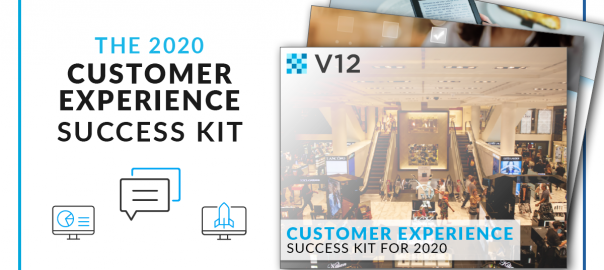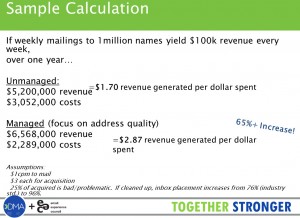In 2020, marketers are looking to achieve significant growth with more direct-to-consumer marketing tactics, connected customer experiences, and diversified products and offerings. They also are aligning their efforts with sales initiatives and strategies to drive company growth.
This is according to a survey by Datorama.
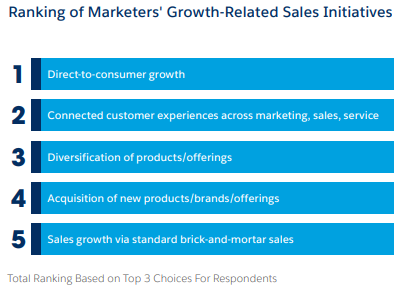
This survey was conducted before the Pandemic took a foothold so it will be interesting as we move towards a new normal, how these initiatives may change in the future. While many of these themes will largely hold true, growing sales via brick-and-mortar channels will probably shift to growing sales via online channels, at least for many industries.
Just how are marketers measuring growth? Sales/revenue was the most obvious indicator, but marketers were also looking at themes such as brand awareness and return on marketing investment.
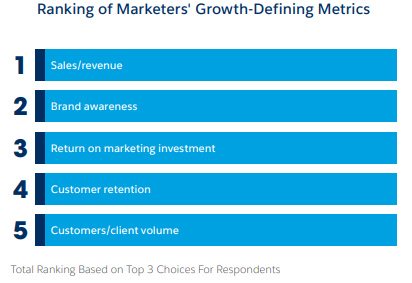
Marketers also ranked their success as achieving these growth metrics:
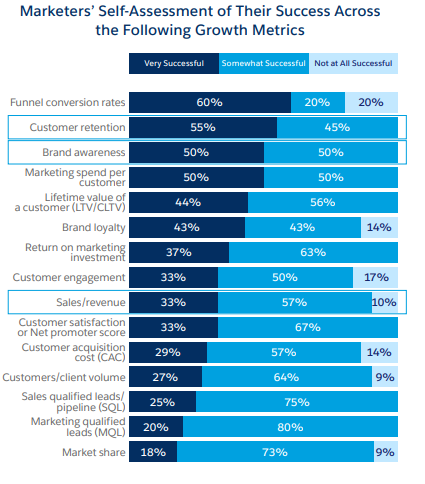
Interestingly, the most common barrier that held marketers back from achieving their objective was data, and more specifically, lack of a comprehensive customer view.
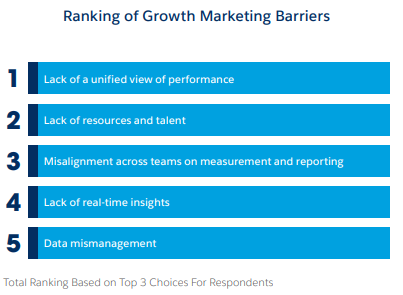
While some of these themes in how marketers rank business growth objectives may vary in the pre and post-Covid-19 environments, the importance of data remains a constant. In order to grow and thrive, brands must prioritize data in order to develop a comprehensive customer view and provide consistent and personalized customer experiences.
However, it’s no surprise that collecting and integrating data into meaningful insights is challenging. Consumers have access to more content than ever and marketers engage consumers across more channels than ever, leading to the production of even more data insights to collect. For example, more than two-thirds of marketers in the Datorama survey cited using display advertising, paid search, paid social, programmatic, website, and email as top channels.
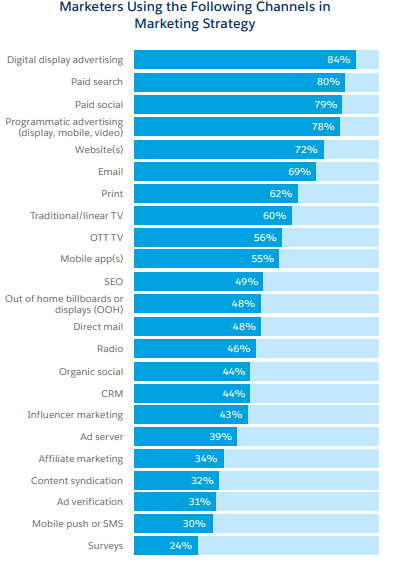
To manage their cross-channel marketing efforts and resulting data, marketers are using an average of 13 different marketing platforms.
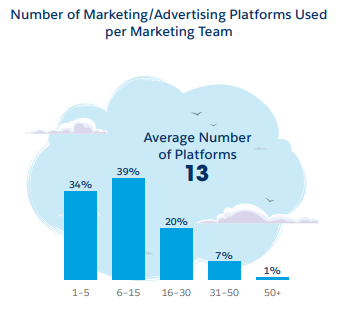
This contributes to the challenge of effectively using data. Each platform often uses different formats or outputs or other factors make it difficult for them to interact with one another. Without an easy way to integrate multiple data sources, achieving a holistic customer view is extremely difficult.
Marketers of course would ideally like to align data in order to both understand customers and see a cross-channel view of marketing’s effectiveness. In fact, 87% of marketers agree that having a complete view of cross-channel marketing is very important/important. On a somewhat positive note, 54% of marketers say their data integration and management processes are “good”, although there is space for improvement.
Marketing professionals are currently using both manual and automated processes to achieve data unification. For the majority, manual processes are being used.
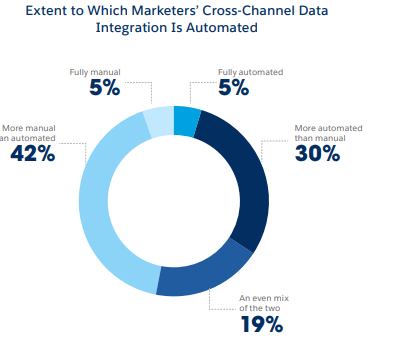
Compounding the problem is the time it takes to unify data for analysis and reporting. This is time that brands do not have. Consumers expect information to be available to them when and where they want it when they engage with brands. Fifty-six percent of customers expect to find whatever they need from a company in three clicks or less, and 71% of customers expect companies to communicate with them in real-time. However, brands are taking too much time to get data to customers in the time they demand it.
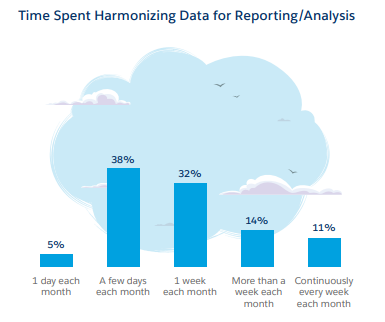
Even then, with all the time spent on getting data sets to talk to one another, marketers are not very confident in the accuracy of their data. Only 16% of marketers are very confident in the accuracy of their data.
Reporting on results is also hampered by data siloes. Forty-two percent of marketers are operating in silos, measuring performance independently within each tool or platform.
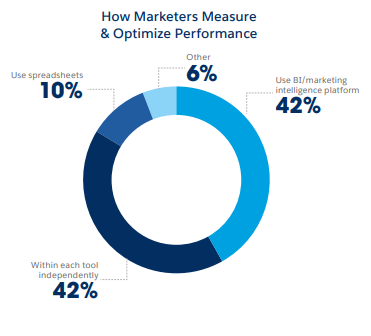
In fact, eighty percent of marketers don’t have access to daily or real-time reports. Rather, they typically generate or receive reports on a monthly or weekly basis.
With so many processes operating in siloed environments, getting to know consumers, providing personalized experiences, understanding results and achieving business growth is often hampered before strategies even have a chance to gain traction.
Customer Data Platforms – Marketing of the Future
More marketers are turning to customer data platforms (CDP) as the answer to many of these challenges. A CDP is a system, operated by marketers, that can integrate data from multiple disparate sources in real time.
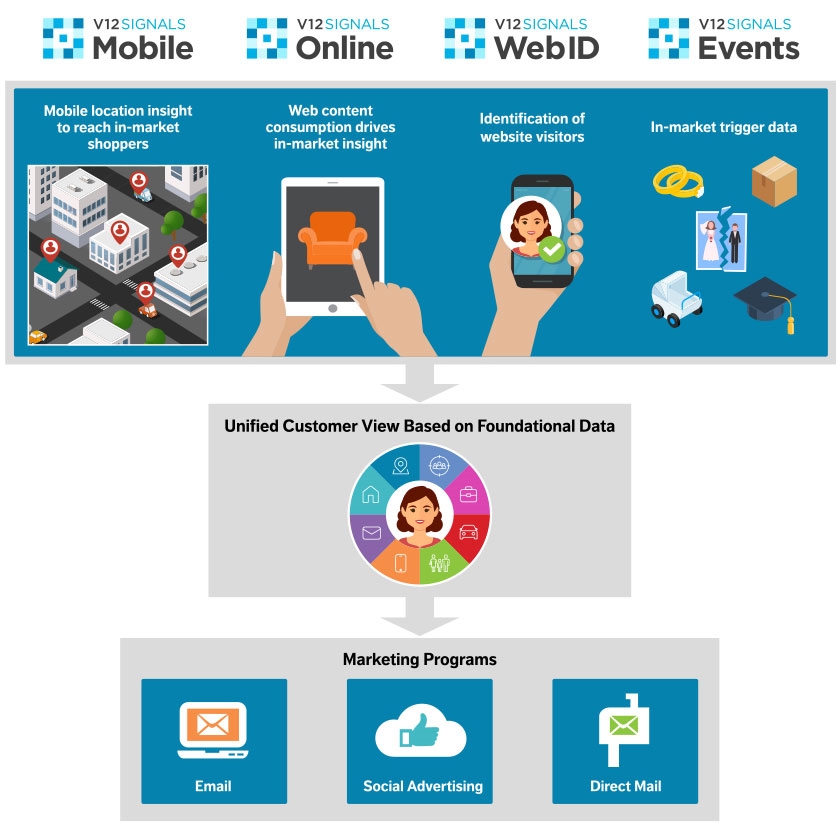
Diagram of V12 Velocity, V12’s Customer Data Platform solution
Once data is integrated, the platform can perform a host of tasks such as developing an omnichannel customer view, performing analytics, orchestrating journeys, executing campaigns and creating campaign dashboards to measure results.
Whatever platform marketers ultimately decide to use, performing these tasks seamlessly and quickly can quickly propel growth initiatives forward.
Driving Marketing Forward with Data
Marketers have opportunities to put data-driven technologies and strategies in place for future success. Marketers agree that accurate and validated data is the cornerstone of marketing success.

Especially now, in such a harsh economic climate, having a data-driven culture in place driven by the right marketing technologies will be instrumental in achieving business growth.
Business & Finance Articles on Business 2 Community
(47)
Report Post